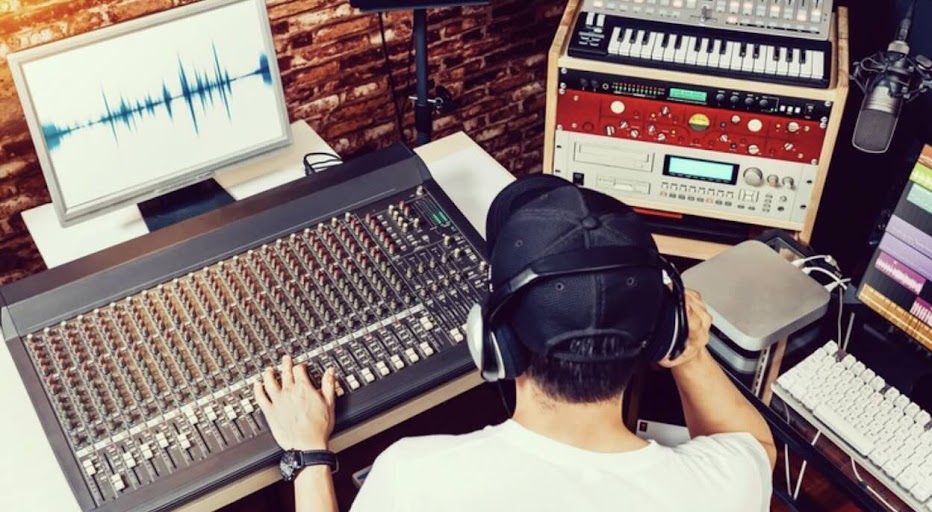Polar patterns
Last time we saw that microphones can be categorized in many ways. One of these ways is by its polar pattern. This pattern is represented by a polar graph. These graphs show us the points (in degrees) with most and least sensitivity.
The basic patterns are the omnidirectional, which captures sound from all directions, and the bidirectional, which senses sound from its front and back. Now we will see what happens when we combine these two patterns.
The basic patterns are the omnidirectional, which captures sound from all directions, and the bidirectional, which senses sound from its front and back. Now we will see what happens when we combine these two patterns.
Cardioid microphone
If we create a 50% omni and 50% bidirectional microphone, we get a cardioid pattern. The name comes from the "heart-shaped" resulting graph.
 |
| Fig. 1. Cardioid pattern |
This kind of microphone is also called unidirectional, as its maximum sensitivity is on its frontal axis (0º). On the other hand, there's almost no sensitivity on its back (180º). This is the most used microphone, as we can easily control what we want to capture with it.
Also, we can see that this microphone has some sensitivity from the sides (90º and 270º), although it's lower (-6 dB) than the on-axis response. This is why it's very important to look for the optimal mic position. Most of the time, it's best to point the axis of the microphone directly towards the sound source.
Hypercardioid microphone
When we combine 75% bidirectional and 25% omnidirectional patterns, we get this result:
 |
| Fig. 3. Hypercardioid pattern |
This is the hypercardioid microphone. As we can see, the pattern has little sensitivity from the back and it has two cancelation points at 120º and 240º. We also see that the lateral sensitivity (90º and 270º) is lower than the cardioid mic. This is why these microphones are very popular for live sound applications as they reject a good amount of ambient noise.
There's another similar pattern, the supercardioid. This pattern is somewhere between the cardioid and the hypercardioid patterns and it's very popular too.
All these microphones have the proximity effect. This is a low frequency boost when the microphone is close to the source. This is why all directional microphones change its tone or "color" as we move them closer or farther to the sound source. If we put them too close, the sound will have more bass (up to 15 dB as seen in the graph!). This can be used as a tool for sound shaping. It's like having an EQ integrated in the microphone! Anyway, if we want the purest sound, then the omni mic would be the best option, as it doesn't have proximity effect.
Subcardioid microphone
This is the oposite pattern to the hypercardioid. It's formed with a 75% omni and a 25% bidirectional. |
| Fig. 5. Subcardioid pattern |
We can see that it looks almost like the omni microphone but it captures a little less from its back. The main advantage of this microphone is that it captures a natural sound because of its little proximity effect but, at the same time, it gives us more ambient noise control than an omni microphone. Anyway, this pattern can produce more feedback problems than the cardioid or hypercardioid. This is why it isn't very popular for live sound applications.
Acoustic marvel
You may wonder, how can all these combinations be done? One way to do it is through acoustic tunnels. These tunnels are cavities that are designed for each kind of microphone, brand and model. The ducts change the phase of the sound wave from different directions and generate cancellations in different points. All this creates different and specific patterns. That's why its very important to avoid blocking the ducts and to hold the microphones in the right way.
 |
| Fig. 6. The vents and ducts create different polar patterns |
Another way to get different patterns is using two microphone capsules, one omnidirectional and one bidirectional. Then, an electronic circuit mixes both signals and create different patterns. These patterns can be selected by the user. These microphones are called multi-pattern and they are very popular in recording studios because of its versatility.
 |
| Fig. 7. Multi-pattern microphone |
Well, we have covered all the most important microphone patterns out there. This information should help the engineer or producer to select the most appropriate kind of mic for a particular application.
You can learn more about microphones in this video:
If you want to learn about Audio Engineering, you can take my Audio Engineering Fundamentals online course, where you'll learn about sound systems, connections. More info and a sample lesson here.









0 comments:
Publicar un comentario